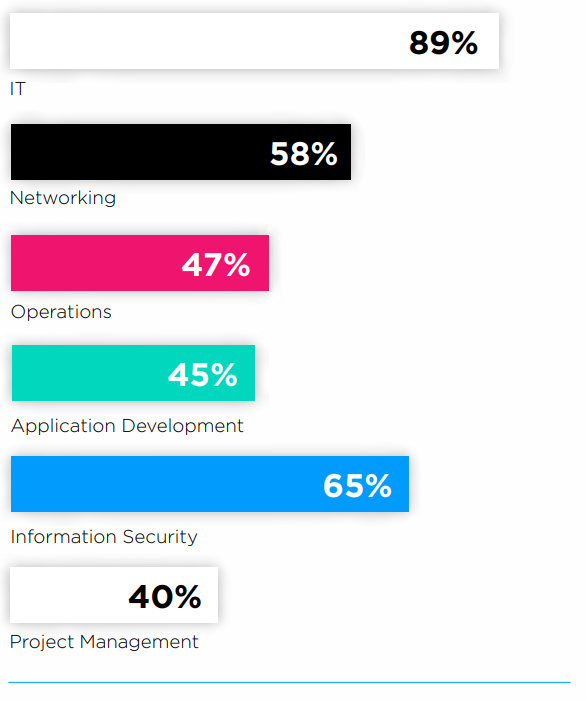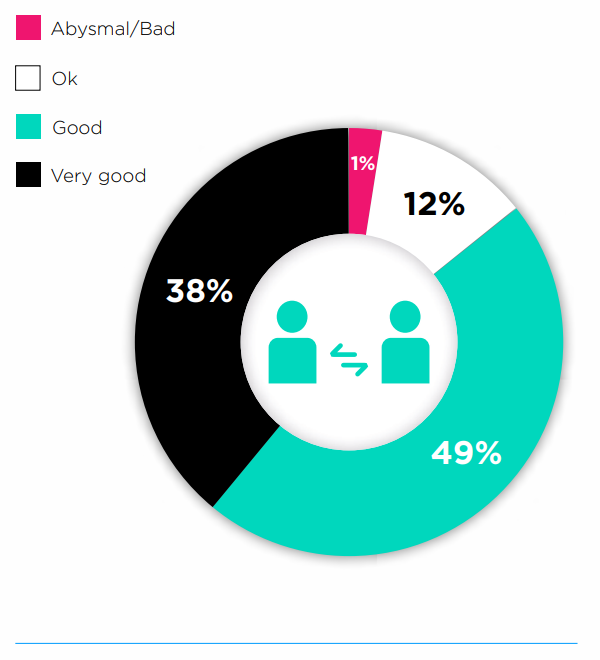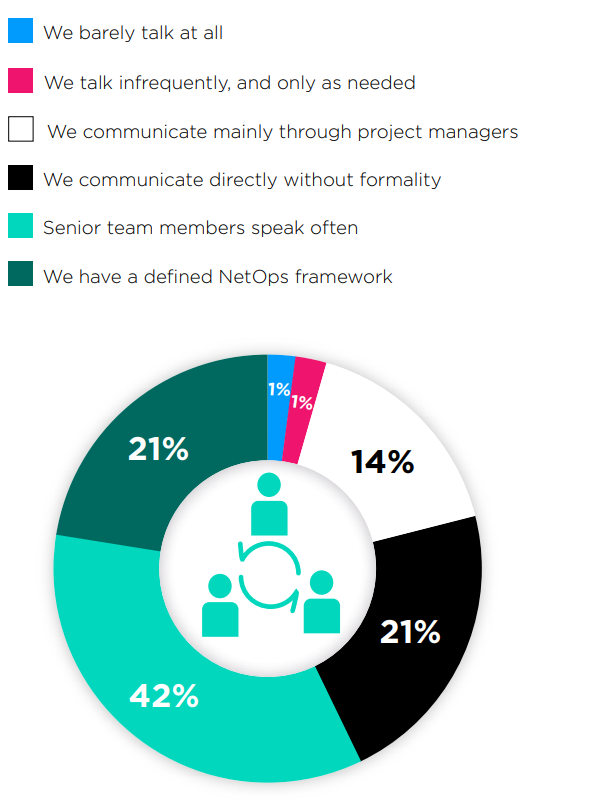The definitive guide to NetOps
Some might consider it one of the more abstract terms used in cloud computing as it describes a broad spectrum of philosophies, practices and tools. Relating to various job roles from app developers to network engineers, NetOps is often talked about. While the term itself stands for “network operations” it actually represents much more.
NetOps encompasses the people, skills and technology deployed to deliver networking, based on the demands of applications and users. One of the main benefits is that companies can overcome traditional barriers that have existed between network, operational and data teams.
Helping to modernise networks and bringing more flexibility to automation and provisioning, it’s an important area that shouldn’t be overlooked.
Here is our guide to understanding NetOps, its advantages, who should be using it in your business, and how you can get the ball rolling.
What is NetOps and why is it beneficial?
NetOps is a networking approach that utilises DevOps tools, methods and techniques to deliver applications and services quickly through an agile infrastructure. It uses a DevOps framework to align teams and optimise the software delivery lifecycle, and this is all done through cross-team collaboration and seamless communication.
The growing use of NetOps in large scale migration projects in particular is fast tracking business growth and providing organisations with greater agility in the competitive landscape. NetOps can help your organisation bridge the gap between technology and strategic business goals. However, while it implements specific DevOps techniques, NetOps and DevOps are not the same.
NetOps vs. DevOps
NetOps can be seen as a progression from DevOps although both aim to deliver digital products that bring value to the business. That doesn’t mean NetOps and DevOps always see eye-to-eye though. If we look at basic desires, DevOps wants to make everything automated, with a focus on evolving and improving products fast. While NetOps wants to leverage automation technology in a more controlled production environment so that the network is stable.
The main goal for NetOps is a rock-solid infrastructure. The main goal for DevOps is speedy delivery. This explains why they are sometimes at odds with each other but are actually complementary concepts and are both there to support continuous delivery (CD) of applications. The main similarity is that they both require a high level of internal cooperation and collaboration.
NetOps benefits
By leveraging powerful automation and other new technology, NetOps helps stay agile and respond quickly to new events or changes, without the burden of the manual effort required historically. This is particularly useful for big network projects such as large cloud migrations.
Other benefits include:
Network automation
This is one of the biggest advantages of NetOps. It has the power to move businesses forward with automation technology. Automation has the highest impact when it’s able to operate across multiple platforms and systems and NetOps helps organisations realise these opportunities. Whether used to automatically detect basic SLA performance metric breaches or used to create entire network stacks, it can elevate operations at every level.
IT cultural alignment
By deploying DevOps techniques and having a communication and delivery framework in place, NetOps can create an optimised way of working. In today’s highly complex IT environments where applications are developed and hosted in multiple locations, the ‘silo effect’ can ensue. A collaborative approach will bring development, infrastructure, network and security teams together, aligning the network with the needs of the business.
The history of NetOps
Today, many network architects face the problem of overly fragile and complex networks – the consequence of years of manual infrastructure management using command line interface (CLI). Historically, device installation, deployment and troubleshooting took place as and when it was needed, without a plan for consistency.
Due to this, any problems that occurred demanded a significant amount of human intervention and input, limiting the network’s scalability and stability. NetOps was created to address the issues seen with legacy networks. The careful approach of NetOps ensures that businesses are able to make their networks more responsive, while also creating a scalable and programmable infrastructure for the future.
Better performance
As well as improved communication between different IT teams, there’s also the advantage of improved overall performance. From faster deployment and reduced downtime to more efficient cost management due to automated capacity, there are many ways in which NetOps can enhance your business.
An agile network
The idea of NetOps is to consider agility from day one. This is achieved by developing core network capabilities alongside application development, making sure the two areas work in harmony with one another. Additionally, this way of working helps to ensure that service level agreements are met by dynamically modifying performance and quality parameters in real time.
Who is using NetOps now, and who should be?
From developers and network engineers to operation managers and security teams, NetOps is relevant to various job roles within an organisation. Therefore, cross-collaboration and communication are key to your project.
We looked at the state of NetOps right now by surveying existing businesses to find out about their current ways of working and the stakeholders involved. Our research asked 255 senior IT leaders in EMEA about their cloud migration projects – and the results tell us that the main stakeholders are within IT, information security, networking, operations, application development, and project management.
Which stakeholders are involved in a cloud migration project?

Cross team collaboration is crucial to success, yet many organisations still aren’t involving all the right teams. Over a third (35%) of organisations don’t include Information Security which could be putting the business at great risk, and almost half (42%) don’t involve Network teams which could lead to unstable infrastructure and an unsuccessful migration.
With so many departments and teams working together, effective tools for communication is more crucial than ever. 49% of respondents say their communication is “good”, while 38% consider their efforts to be “very good”. A smaller percentage (12%) tell us that communication is just “ok”, while only 1% say communication is “bad”.

Overall, the majority of businesses have good methods in place for improving collaboration, however, despite adequate levels of communication between teams, few IT leaders are using a framework to guide them.
Only 21% of IT and networking leaders have a defined NetOps framework
How do you collaborate between IT and Networking teams during cloud projects?

Our research shows that while they rate their communication as “good” or “very good”, the lack of a defined framework can still be problematic.
In fact, IT leaders tell us that communication errors are still causing delays in 42% of cloud migration projects:
Has bad communication ever caused delays in a cloud migration project?

This highlights the importance of having a defined operational framework, and interactions need to strike a balance between formal and informal discussions. Much like DevOps, there also needs to be a change in workplace culture, removing hierarchical barriers and allowing team members to share ideas and raise concerns freely.
Our results also indicate that the lack of involvement from networking teams and IT security teams may be slowing things down. Taking a closer look at the data, we wanted to compare which stakeholders were involved for:
a.) Projects that experienced delays
b.) Projects that were delivered on time

For delayed projects, networking team involvement drops from 61% to 55%, while IT security involvement drops from 69% to 62%. This highlights the importance of a collaborative effort, with networking and security specialists taking a central role in cloud projects.
The higher the involvement of networking teams, the fewer the setbacks. Therefore, a NetOps framework is paramount to making sure cloud migration projects are delivered within the specified timeline, reducing costly delays.
Is NetOps the future of cloud migration and networking projects?
Businesses are always talking about finding ways to be more agile. This has been heavily explored in development, with DevOps a game changer for organisations looking to overhaul the way that dev and operations work together. This joined up approach is needed for agile development – but agile networking is just as vital.
A slow network is detrimental to operations. Improved agility leads to better productivity, faster deployment, improved services and higher performance. This makes NetOps the future
of cloud and networking projects, because it enables networks to be both available and agile. It makes the network responsive and nimble when it comes to configuration, capacity and operations while also offering higher levels of reliability, performance and security.
There’s a growing demand for business agility in modern times, and there’s also an increasing reliance on the network, making NetOps practices critical to scalable IT operations. The whole concept of NetOps is to give enterprises the right philosophies and tools to build a network that can respond quickly to application and end user needs. It tackles these things in a consistent manner, building a solid and stable infrastructure from the beginning.
As a result, enterprises are able to take on large-scale cloud migration projects with ease. Enabling their teams to successfully and seamlessly migrate critical applications by leveraging NetOps practices.
For organisations that need to improve efficiencies with legacy networks, or companies dealing with fragile and complex networks that require a great deal of human intervention, automation is the solution. Programmability- enabled networks are the future, using intelligent software to make the engineer’s life easier. The results are reduced long-term costs, optimised bandwidth, better allocation of resource, improved operational flexibility and enhanced transparency, and increased support for emerging security technologies.
Ready to get started?
Before adopting NetOps, there are some things businesses must consider, such as the technology and tools you have in place, the skills and resource available to you (in-house or otherwise), as well as the existing business culture. Moving to NetOps can be a big change and it will dramatically alter your ways of working, so planning is key.
Cultural and skill barriers may be the main setbacks. Taking the time to understand the benefits and planning your migration in managed phases really is the best approach. If executed well, NetOps can boost productivity levels and help your organisation embrace new projects, processes and technologies in a highly effective way.
What steps can you take in your organisation to get started with NetOps?
The very first steps in NetOps don’t always have to require a huge cultural shift (although this can’t be ignored). While changing IT culture is the goal, it’s all about keeping the bigger picture in mind, but advancing with baby steps. Think big, but start small.
Here are 5 steps to get you started:
1. Begin with an easy project
As part of starting small, you should choose a workflow that is clearly defined by specific inputs and outputs. The more complex the task, the more difficult it will be to automate. By selecting a simple workflow (often something that sits within a larger, more intricate process), you’ll be able to test the waters effectively.
By starting with a workflow where you have maximum control and better collaboration and influence, you can move quickly.
2. Map out each phase
While it’s important to start small and move fast, it’s also wise not to move too fast. Only approach with speed once you have mapped out the stages – this will help you communicate the different requirements and expectations for each step. Therefore, it’s recommended that every action is documented to ensure all ‘tribal knowledge’ can be shared amongst other teams. By doing this, you will aid collaboration and prevent unwanted delays.
For almost any network operations team, the deployment of NetOps can bring a multitude of automated benefits. Yet, there can often be resistance to take this approach due to unfamiliarity, a lack of knowledge, and a lack of time (or fear that teams are unable to fully commit). But NetOps should be seen as an evolution of your network, rather than something revolutionary. This means teams can adopt the approach in manageable stages, without a major upheaval.
3. Watch out for bottlenecks
Identifying issues and minimising delays are key responsibilities for a NetOps teams. Like with any project, there will be some areas that are rich for improvement and it’s up to the NetOps team to recognise bottlenecks and optimise flow. Plan ahead and be prepared for things to slow down when there are multiple manual steps involved, or when there are interdependencies that occur outside the network. You should also think about ways to streamline the workflow and make necessary changes to the way you handle reviews or testing.
4. Embrace automation
When tackling your first NetOps project, it’s likely you won’t be able to automate everything. Your first workflow is about focusing on those initial steps to automation and automating what you can. At this stage, focus more on tasks such as troubleshooting, as repetitive troubleshooting workflows can act as an early form of testing and verification.
5. Continually test and review
The final step is a continuous sequence of tests, analytics and reviews. Once your automated workflow is in operation, the work doesn’t stop there. After careful monitoring, you may find other ways of improving momentum. Whether you need to scale up, automate more areas or extend to further parts of the process, it’s important to learn and grow along the way.
